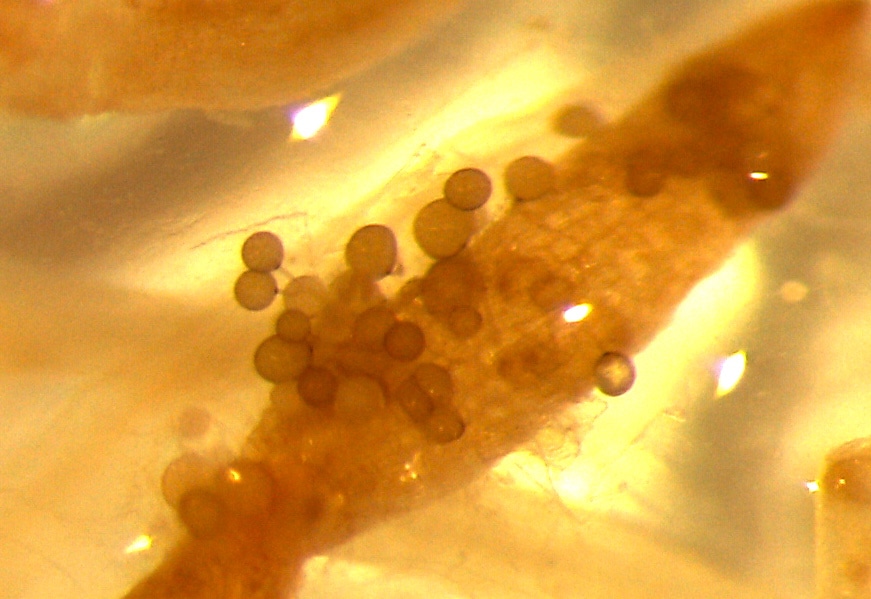
Introduction
Mycorrhizal fungi are a living extension of the plant’s root system. These fungi can bring more nutrients and water than the plant could ever do on its own. Mycorrhizal Fungi have been helping plants survive for 400 million years and are believed to be the reason plants moved from the ocean onto land.
In this article, we take a comprehensive deep dive into mycorrhizal fungi. We break everything down into simple terms – meaning you’ll be an expert on the subject by the end of the post (or at least that’s the goal).
Let’s get started.
Terminology & Pronunciation
What is the difference between “mycorrhizae”, “mycorrhiza” and “mycorrhizal”?
If you’ve started any research online, you may have some questions about terminology. Below is a basic definition guide to help you.
Mycorrhizal – this is an adjective describing a noun (in this case the noun is “fungi”)
Mycorrhiza – the singular form
Mycorrhizae – plural form (most commonly used in association with pre-packaged products because there are hundreds/thousands/millions of mycorrhiza in a single package)
We tend to use the term “mycorrhizal” because we associate it with the fungi in each instance.
Pronunciation of “mycorrhizal”, “mycorrhizae” and “mycorrhiza”
Knowing how to say every version of this type of fungi can be a challenge. We’ve recorded audio clips of each word’s pronunciation.
“Mycorrhizal” pronunciation
The correct pronunciation of “mycorrhizal” is “my-core-high-zal”
Listen here:
“Mycorrhizae” pronunciation
The correct pronunciation of “Mycorrhizae” is “my-core-high-zay”
Listen here:
“Mycorrhiza” pronunciation
The correct pronunciation of “Mycorrhiza” is “my-core-high-zah”
Listen here:
(By the way, “fungi” is pronounced, “FUN-GUY”)
Now you know!
Types
There are thousands of species of mycorrhizal fungi that develop in nature. They are typically classified into two types: endomycorrhizal and ectomycorrhizal. These types are based on the physical location of the “hyphae” (small filaments or branches of fungus) in relation to the root system. Endomycorrhiza produces hyphae inside the roots, while ectomycorrhiza hyphae produce hyphae outside the root. The Oklahoma State University extension created a good resource on these differences if you want to take a look.
Images of Mycorrhizal Fungi
It can be helpful to have visual examples of what mycorrhizal fungi look like on a microscopic level. We created a quick gallery of images showing the hyphae and root systems to which the fungi attach.
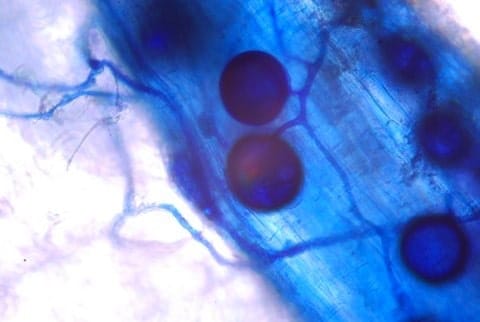
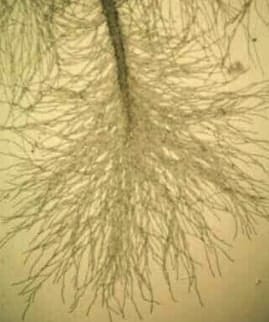
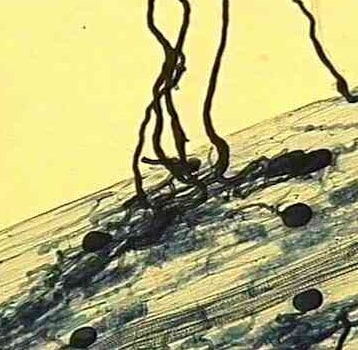
Understanding how Mycorrhizal Fungi work with soil and bacteria
To understand the function of mycorrhizal fungi, one needs to understand the relationship between soil, bacteria, and fungi.
Soil is essentially a living organism that needs nutrients. Soil is composed of a combination of minerals, organic matter, organisms, water, and gas. The exact ratios and ingredients depend on geography, location, use in farming, etc. In its natural state, organic matter (like fallen leaves, dead animals, composting vegetables, manure, etc.) will break down and be converted to natural fertilizer in the soil. This can be used by plants, trees, etc. for food.
The process of breaking down this organic matter is done by bacteria. Bacteria can take solid forms and transform them into smaller, usable “units” for plants to use. In simplest terms, bacteria eat organic matter and excrete poop which is usable by plants.
Mycorrhizal fungi are the middlemen between bacteria and plants. Mycorrhizal fungi act like the interstate highway system, shipping blocks of nutrients to the plant. They allow plants to access deeper and hard-to-access areas of the soil in search of nutrients. Plants LOVE this because they get more nutrients. Mycorrhizal fungi benefit because the host plant(through photosynthesis) sends down starches, lipids, and sugars to keep them growing strong.
Benefits of use in gardening, agriculture, and horticulture
Gardeners, farmers, and professional growers have one thing in common: they want more results from their plants. They want increased production for the effort (called “yield” in agriculture), larger produce size, and the ability to see results year after year.
In order to achieve these ends, gardeners and farmers will use mycorrhizal fungi.
Increased plant production (yield)
Because the plants have more nutrients being delivered through the fungi, they are able to put this energy into increased production. Growers will often see more produce, fruit, or vegetables per plant.
Larger Produce

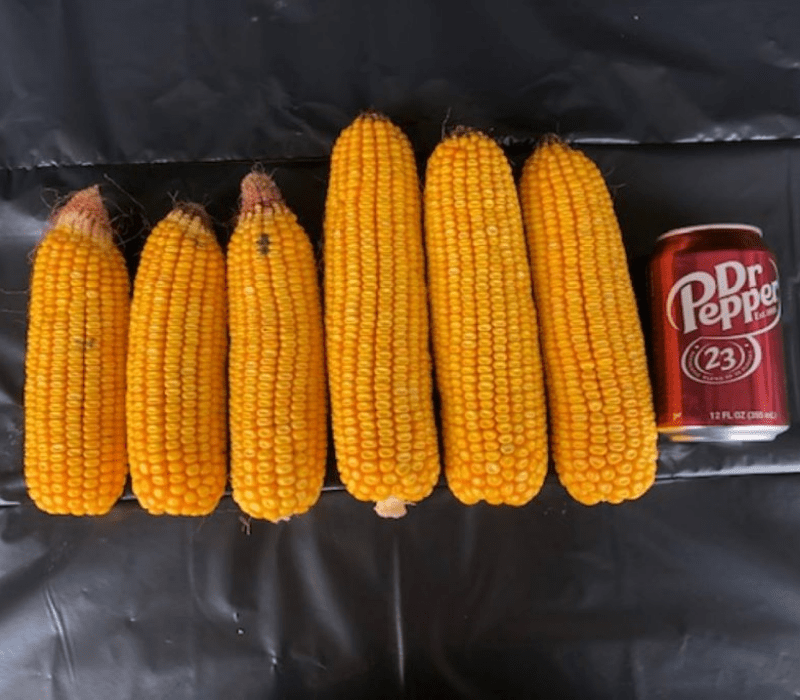
Again, because the nutrient levels are so much higher when using mycorrhizal fungi, plants will be able to increase the physical size of produce. Tomatoes will be noticeably larger and heavier. Corn cobs will be MUCH larger.
Year-after-year results

The concept of crop rotation and “resting” soil is very important to growers. If a gardener or grower uses the same soil over and over and over again without replenishing any of the nutrients – the soil will become barren. Growers use mycorrhizal fungi to help combat this effect on plants by allowing them to access harder-to-reach nutrients locked away in the soil.
Conclusion
Mycorrhizal Fungi play a very important role in the soil’s food web. Recent agricultural methods like rototilling, synthetic fertilizers, and herbicides/fungicides have been detrimental to our gardens and soils, taking away the plant’s ability to draw nutrients in a natural way. Mycorrhizal fungi give us growers the ability to have properly functioning soils – resulting in more abundant harvests and healthier fruits and vegetables.
Brady Krchnavy
Brady grew up farming the fields of southeast North Dakota and is the owner of GardenFungi.com. He helps farmers and growers enhance root growth and improve soil health.

